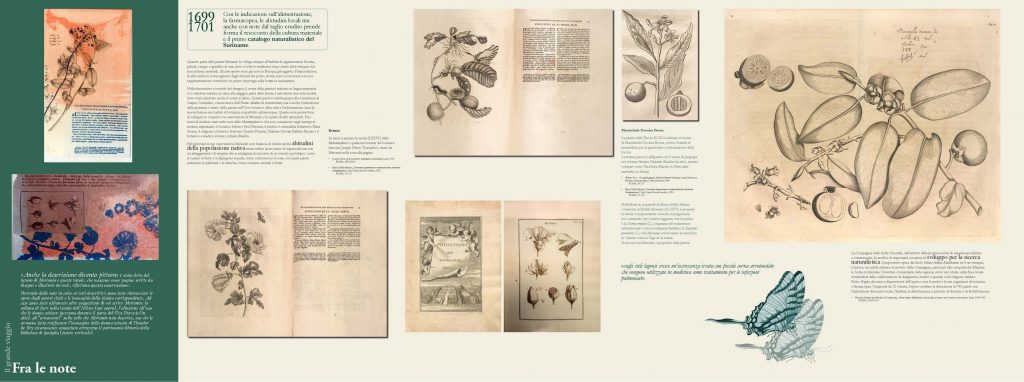Merianin arrives in Suriname in September 1699: the New World known from books and collections of rarities is now real. She remains in the country for about twenty-one months during which she searches, collects, feeds, observes, and draws caterpillars, insects, and plants. Her work will appear in the illustrated plates of the Metamorphosis that she will publish upon her return and that will show the nurse plant at the centre, surrounded by the insect in its various stages of development, egg, larva, caterpillar, pupa, and winged animal. In this way,: Merianin’s depiction of nature restores the links between animal and plant species. Other animals that live in the vicinity of the plant are also often depicted as simple embellishment. The format of the book, a folio of over 35×56 cm allows for the enchantment of life- size. Merianin accompanies each plate with a detailed description resulting from her observations: a way of presenting the results of her research that she had already experimented with in the Book of Caterpillars. In the book’s introduction, Merianin mentions sources and scholars whom she found helpful: thus we know that she learnt from the local population some of the plant names, which she mentions in her remarks on the side of each illustrated plate, while she assigned the Latin names with the help of Caspar Commelin, director of the Amsterdam Botanical Gardens. In the showcases, it is possible to see several illustrated plates from the 18th-century edition preserved in the Archiginnasio Library next to other illustrations of similar plants from books by contemporary naturalists cited by Merianin.


